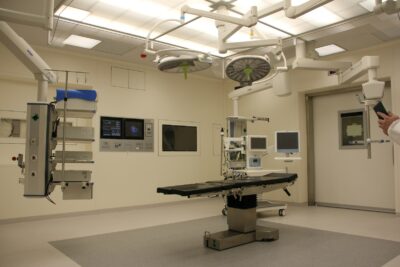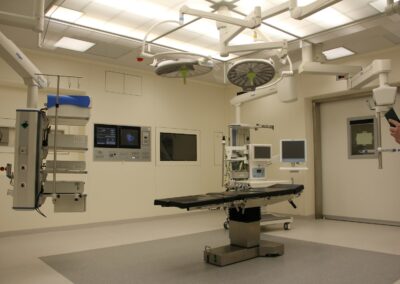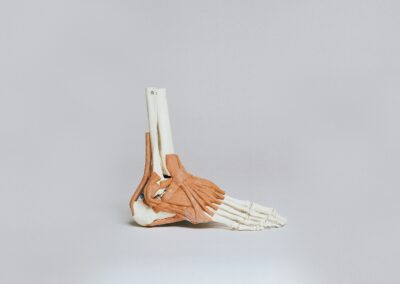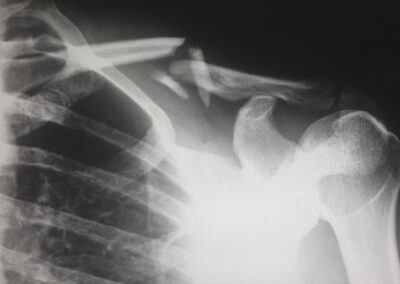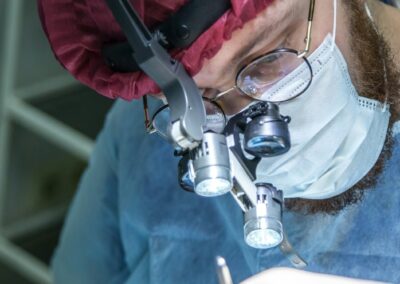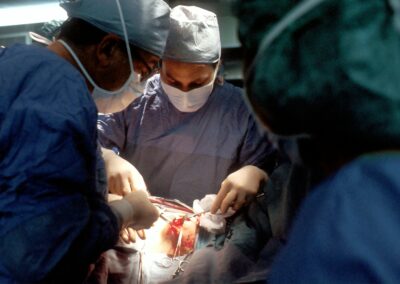The Role of Digital Twins in Complex Surgical Procedures
Enhancing Surgical Planning with Digital Twins
Digital twins in complex surgical procedures represent a significant leap forward in the medical field. These advanced virtual models offer a highly detailed and dynamic simulation of a patient’s anatomy, which can be used to plan and rehearse intricate surgical interventions. By creating a precise digital replica of the patient’s body, surgeons can simulate various surgical scenarios, assess potential complications, and refine their strategies before making any incisions.
In practice, this means that surgeons can visualize the surgical environment in a risk-free setting, allowing for more informed decision-making. For instance, digital twins can model how different surgical techniques might impact the patient’s anatomy, helping to identify the optimal approach. This preparation not only enhances the surgeon’s confidence but also reduces the likelihood of unexpected complications during the actual procedure.
The application of digital twins extends beyond planning. By integrating real-time data from diagnostic imaging and patient monitoring systems, these models can be continuously updated to reflect the most current state of the patient’s condition. This dynamic capability ensures that surgical plans remain relevant and accurate throughout the entire process, from pre-operative planning to post-operative care.
Improving Execution Accuracy Through Real-Time Simulations
One of the most transformative aspects of digital twins in complex surgical procedures is their ability to enhance execution accuracy. During a surgery, having a real-time digital model of the patient’s anatomy allows surgeons to make precise adjustments based on the actual conditions inside the operating room. This real-time feedback is crucial for navigating the complexities of intricate procedures and addressing unforeseen challenges promptly.
Digital twins facilitate this by integrating data from various sources, such as intraoperative imaging and sensor systems. These inputs are used to update the digital model continuously, providing the surgical team with a live, accurate representation of the patient’s anatomy. Surgeons can use this information to make well-informed decisions on the fly, improving the overall precision and effectiveness of the procedure.
Furthermore, this technology supports a more collaborative approach to surgery. With digital twins, various specialists can simultaneously access and interact with the virtual model, enabling better coordination and communication among the surgical team. This collaborative environment enhances the overall quality of care and ensures that all team members are aligned with the surgical plan.
Addressing Challenges and Implementing Solutions
Despite the promising advantages, integrating digital twins in complex surgical procedures presents certain challenges. One major issue is the need for high-quality, accurate data to create and maintain the digital models. Inaccurate or incomplete data can lead to flawed simulations and impact surgical outcomes negatively. To address this, healthcare providers must invest in advanced imaging technologies and data integration systems to ensure the precision of the digital twins.
Another challenge is the need for specialized training and adaptation. Surgeons and medical staff must be adequately trained to utilize digital twin technology effectively. This requires ongoing education and practice to ensure that all team members can leverage the full potential of digital twins in their surgical planning and execution. Implementing comprehensive training programs and providing support resources can help overcome this hurdle.
Additionally, the integration of digital twins into existing surgical workflows may require modifications to current practices and systems. Healthcare organizations must ensure that digital twin technology aligns with their existing infrastructure and workflows to avoid disruptions. This might involve upgrading software systems, revising procedural protocols, and fostering a culture of innovation within the organization.
Future Implications and Advancements
Looking ahead, the role of digital twins in complex surgical procedures is set to expand further with advancements in technology. As artificial intelligence (AI) and machine learning continue to evolve, digital twins will become even more sophisticated, offering enhanced predictive capabilities and personalized surgical strategies. These advancements will likely lead to more precise and efficient surgical interventions, ultimately improving patient outcomes.
Moreover, the integration of digital twins with emerging technologies such as blockchain and the Metaverse could offer additional benefits. Blockchain could ensure the secure and immutable storage of surgical data, while the Metaverse could provide immersive environments for surgical training and collaboration. These innovations will likely enhance the functionality and application of digital twins in surgery.
In conclusion, digital twins in complex surgical procedures are revolutionizing the field of surgery by improving planning, execution, and overall patient care. While challenges exist, the benefits of this technology are substantial and transformative. As technology continues to advance, digital twins will play an increasingly critical role in shaping the future of surgical practices and healthcare delivery.
#DigitalTwins #ComplexSurgicalProcedures #SurgicalPlanning #AdvancedMedicalTechnology #HealthcareInnovation #ArtificialIntelligence #SurgicalPrecision #HealthcareTransformation #SaudiArabia #UAE #Riyadh #Dubai #BusinessSuccess #Leadership #ProjectManagement




